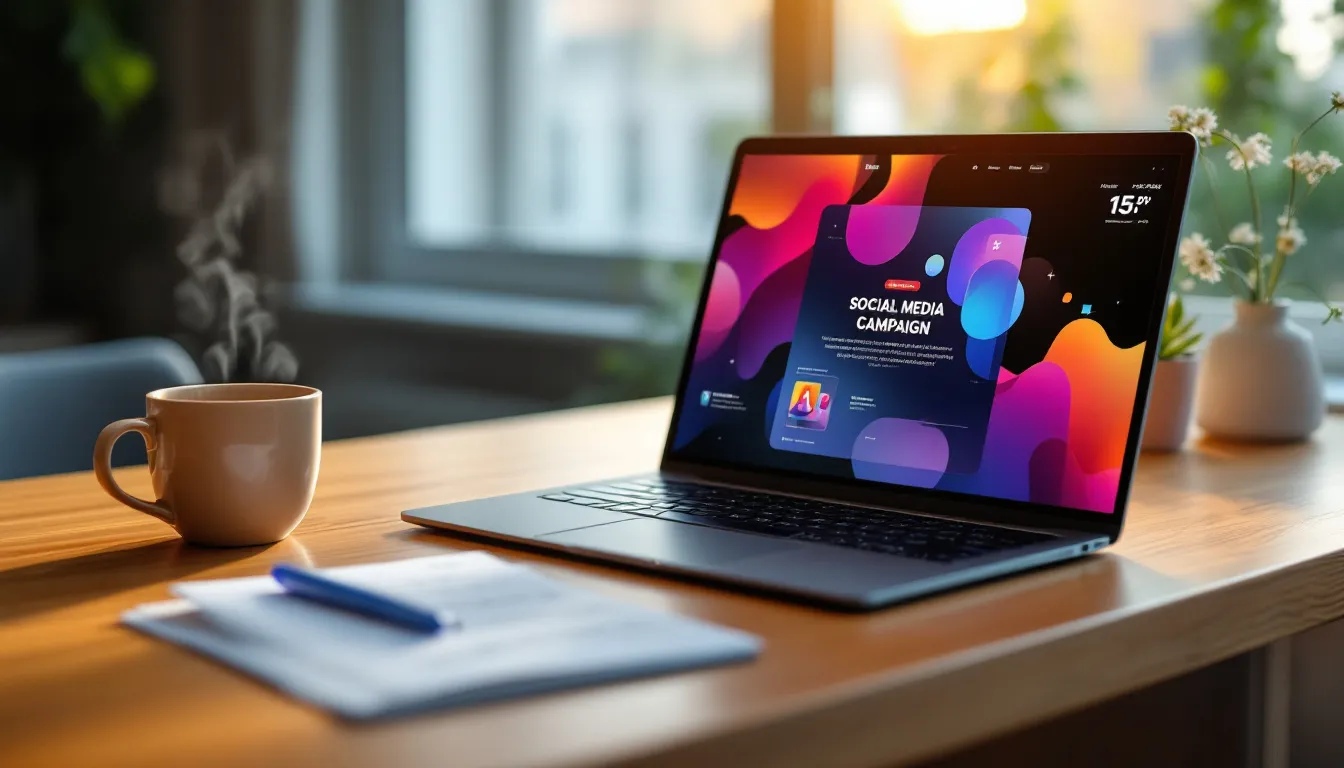Video conferencing is a must-have tool for creators in 2024. It helps you host workshops, collaborate on projects, and connect with your audience. To make the most of it, you need the right setup:
- Camera: At least 1080p resolution with good low-light performance.
- Microphone: USB mic or noise-canceling headset for clear audio.
- Lighting: Use soft, even lighting from a window or softbox.
- Background: Neutral, clutter-free, and professional.
- Internet: Stable connection with 1-2 Mbps download and 0.75-1.4 Mbps upload.
Set your webcam at eye level, test your equipment before calls, and use tools like virtual backgrounds or all-in-one systems for a polished look. Platforms like TapeReal also let you monetize your recorded sessions. A good setup ensures professional and engaging video calls.
Related video from YouTube
Tools You Need for a High-Quality Video Call Setup
Creating a professional video conferencing setup starts with choosing the right equipment. Here's what you need to ensure clear communication and a polished appearance during your calls.
Choosing the Right Camera for Video Calls
Look for a camera with at least 1080p resolution, auto-focus, a wide-angle lens, and good performance in low light. These features are key to delivering sharp, engaging video. There are plenty of options available, but focusing on these essentials will help you stand out.
Microphones and Headsets for Clear Sound
Clear audio is just as important as great video. A USB microphone with noise cancellation or a headset with an integrated mic and over-ear design can help reduce background noise and improve sound clarity. If you're a professional creator, adding an audio interface can take your sound quality to the next level.
Setting Up Lighting and Backgrounds
Lighting can make or break your video quality. Place your primary light source in front of you to eliminate shadows. Facing a window with indirect sunlight works well for soft, even lighting. If the sunlight is too harsh, use curtains to diffuse it. Alternatively, softbox lights are a great option for consistent, flattering illumination.
When it comes to your background:
- Stick to neutral colors for a clean look.
- Add depth by avoiding flat walls directly behind you.
- Maintain some distance between yourself and the background for a more professional feel.
The Importance of a Stable Internet Connection
A reliable internet connection is crucial for smooth video calls. Here are the minimum speed requirements:
| Connection Type | Minimum Speed |
|---|---|
| Download | 1-2 Mbps |
| Upload | 0.75-1.4 Mbps |
For critical calls, having a backup internet option can save you from unexpected interruptions.
Once you have the right tools, the next step is setting up your workspace to project a professional image.
Setting Up Your Space for Better Video Calls
For creators, having a well-prepared setup enhances professionalism and helps keep your audience engaged during video calls.
Positioning Your Webcam Correctly
How you position your webcam can make or break your on-screen presence. Place the camera at eye level or slightly above your monitor to create natural eye contact. Avoid angles that are too low or high, as these can distort how you look.
To get the best framing, follow these tips inspired by the rule of thirds:
- Align your eyes with the top third of the frame.
- Center yourself with equal spacing on both sides.
- Keep about 2-3 feet between you and the camera.
Using a tripod or a laptop stand can help keep your camera steady and at the right height.
Testing Equipment Before Calls
Testing your setup before any important call is a must. Platforms like Zoom and Microsoft Teams offer built-in tools to check your video and audio settings [3]. Use this quick pre-call checklist to ensure everything works smoothly:
| Test Component | What to Check | Recommended Action |
|---|---|---|
| Video | Frame rate and clarity | Use the platform's video preview. |
| Audio | Microphone volume and quality | Test with the audio settings tool. |
| Internet | Connection speed and stability | Run a speed test. |
| Background | Lighting and overall look | Record a short test video. |
Reducing Noise and Distractions
A quiet, distraction-free environment is key to better video calls. Adding acoustic panels to your walls can reduce echo and improve sound quality [2]. Rugs, curtains, and soft furnishings also help absorb sound.
For audio clarity, consider using noise-cancelling headsets to block out background sounds like typing or fans.
Visually, keep your background neat and professional. If you're working from home, designate a specific area for video calls where you can control the setting.
With your space set up, you’ll be ready to explore advanced tools and techniques to take your video calls to the next level.
sbb-itb-bc761f5
Extra Features and Tools to Improve Video Calls
Using Virtual Backgrounds and Effects
Virtual backgrounds are a great way to maintain a polished look without needing pricey physical setups. Pick backgrounds that match your brand and keep the focus on your message. They not only improve how your video calls look but also help create a more engaging experience for your audience.
Advanced tools like the Neat Frame go a step further by removing the 'halo effect' often seen with low-quality virtual backgrounds, giving your setup a clean and professional finish [1].
| Feature Type | Best Use Case | Common Pitfalls to Avoid |
|---|---|---|
| Static Backgrounds & Blur Effects | Business meetings, privacy concerns | Busy designs or mismatched colors |
| Brand Overlays | Workshops, promotional events | Oversized logos, poor color contrast |
Features on Video Platforms to Boost Engagement
Modern video platforms come with tools designed to make calls more interactive and valuable. For example, screen sharing lets you easily explain ideas, while breakout rooms facilitate smaller group discussions during larger events [4].
Recording features are especially useful for creators. With recordings, you can repurpose live sessions for:
- Social media snippets
- Timeless content for future campaigns
- Exclusive material for members
Investing in All-in-One Video Systems
Instead of piecing together separate tools, all-in-one video systems simplify your setup by combining everything you need into one device. These systems enhance both video and audio quality. For example, the Neat Bar is a standout option, offering a high-quality camera and a 5-mic array for clear sound [1].
If you're serious about stepping up your video conferencing game, these all-in-one options are worth considering. Here are some key features to look for:
| Feature | Why It Matters | Example Specification |
|---|---|---|
| Camera Quality | Delivers sharp, professional visuals | 4K resolution, wide lens |
| Audio System | Ensures clear sound without extras | Noise cancellation, 5+ mics |
| Integration | Works smoothly with your tools | Multi-platform compatibility |
With features like auto-framing and noise suppression, these systems ensure your calls stay professional no matter the setting.
How TapeReal Can Help Creators

TapeReal works alongside video conferencing tools by giving creators a way to earn from recorded sessions, build exclusive content libraries, and strengthen their connection with their audience. While live calls are great for real-time interaction, TapeReal takes it further by turning those sessions into income-generating resources.
Creators can turn behind-the-scenes content, tutorials, or technical walkthroughs into premium offerings. Recorded workshops and Q&A sessions can also be repackaged into paid content bundles. Unlike many video platforms, TapeReal lets creators directly earn from exclusive content while keeping full control over how it’s shared.
| Content Type | Monetization Strategy | Audience Benefit |
|---|---|---|
| Tutorials & Behind-the-Scenes | Premium/Early Access | Gain new skills and exclusive insights |
| Workshop Recordings | Course Bundles | Learn at your own pace |
TapeReal’s privacy-first approach ensures creators have control over their content, pricing, and distribution. With premium membership options, creators can grow their audience and monetize their expertise. Additionally, community features allow creators to connect with peers, exchange tips on video conferencing, and collaborate on projects.
Final Thoughts and Tips for Video Conferencing
Keeping your video conferencing setup in top shape is key to ensuring smooth and professional calls. Here's how you can stay on top of your game:
Technical Setup: Regularly update your video conferencing software to access new features and stay protected with the latest security updates. A reliable internet connection is a must to avoid interruptions and lag during calls.
Optimize Your Space: Set your camera at eye level for a natural angle, position your main light source in front of you to avoid shadows, and use materials like curtains or acoustic panels to reduce echo and improve sound quality.
Upgrade Your Gear: Consider all-in-one video systems that combine cameras, microphones, and speakers. These setups simplify your workflow, reduce troubleshooting time, and improve overall call quality.
Be Prepared During Calls: Handle common issues with ease by:
- Switching to a backup audio source if needed
- Using preset lighting setups for quick adjustments
- Keeping essential controls within easy reach
- Monitoring chat or participant feedback for any technical concerns
For content creators, maintaining a high-quality setup is especially important. Whether you're hosting a workshop, conducting an interview, or streaming live, a reliable setup ensures your message comes across clearly and keeps your audience engaged.



